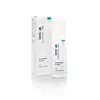What's inside
What's inside
 Key Ingredients
Key Ingredients

 Benefits
Benefits

 Concerns
Concerns

 Ingredients Side-by-side
Ingredients Side-by-side

Water
Skin ConditioningButylene Glycol
HumectantGlycerin
HumectantCetyl Ethylhexanoate
Emollient1,2-Hexanediol
Skin ConditioningNiacinamide
SmoothingHydrogenated Lecithin
EmulsifyingPentaerythrityl Tetrabehenate
EmollientDiethoxyethyl Succinate
SolventBetaine
HumectantCeramide NP
Skin ConditioningMelia Azadirachta Flower Extract
Skin ConditioningHydroxyethyl Urea
HumectantBakuchiol
AntimicrobialCetearyl Alcohol
EmollientSqualane
EmollientCoccinia Indica Fruit Extract
Skin ConditioningPanthenol
Skin ConditioningCarbomer
Emulsion StabilisingButyrospermum Parkii Butter
Skin ConditioningTromethamine
BufferingXanthan Gum
EmulsifyingAllantoin
Skin ConditioningEthylhexylglycerin
Skin Conditioning2,3-Butanediol
HumectantAdenosine
Skin ConditioningDisodium EDTA
Lavandula Angustifolia Oil
MaskingSodium Carboxymethyl Beta-Glucan
CleansingGlyceryl Stearate
EmollientDipropylene Glycol
HumectantCitrus Aurantium Bergamia Fruit Oil
MaskingSodium Hyaluronate
HumectantRubus Fruticosus Fruit Extract
AstringentVaccinium Macrocarpon Fruit Extract
AstringentVaccinium Angustifolium Fruit Extract
Skin ProtectingRubus Idaeus Fruit Extract
AstringentSambucus Nigra Fruit Extract
AstringentSodium Lactate
BufferingPolyglyceryl-10 Laurate
Skin ConditioningCeramide Ns
Skin ConditioningCeramide As
Skin ConditioningCeramide AP
Skin ConditioningCholesterol
EmollientSalvia Officinalis Oil
MaskingPolysorbate 20
EmulsifyingOctyldodecanol
EmollientPolyglyceryl-4 Caprate
EmulsifyingMethylpropanediol
SolventHydrolyzed Hyaluronic Acid
HumectantHydrolyzed Sodium Hyaluronate
Skin ConditioningHyaluronic Acid
HumectantHydroxypropyltrimonium Hyaluronate
Potassium Hyaluronate
Skin ConditioningAstaxanthin
Skin ConditioningPentylene Glycol
Skin ConditioningSodium Hyaluronate Crosspolymer
HumectantPalmitoyl Tripeptide-1
Skin ConditioningSoluble Collagen
HumectantSodium Acetylated Hyaluronate
HumectantCopper Tripeptide-1
Skin ConditioningPalmitoyl Tetrapeptide-7
Skin ConditioningOligopeptide-32
AntiseborrhoeicOligopeptide-29
AntioxidantAcetyl Hexapeptide-8
HumectantCeramide EOP
Skin ConditioningAcetyl Tetrapeptide-2
Skin ConditioningAcetyl Tetrapeptide-3
Skin ProtectingAcetyl Octapeptide-3
HumectantPalmitoyl Pentapeptide-4
Skin ConditioningOligopeptide-6
Skin ConditioningHexapeptide-9
Skin ConditioningNonapeptide-1
Skin ConditioningLimonene
PerfumingLinalool
PerfumingWater, Butylene Glycol, Glycerin, Cetyl Ethylhexanoate, 1,2-Hexanediol, Niacinamide, Hydrogenated Lecithin, Pentaerythrityl Tetrabehenate, Diethoxyethyl Succinate, Betaine, Ceramide NP, Melia Azadirachta Flower Extract, Hydroxyethyl Urea, Bakuchiol, Cetearyl Alcohol, Squalane, Coccinia Indica Fruit Extract, Panthenol, Carbomer, Butyrospermum Parkii Butter, Tromethamine, Xanthan Gum, Allantoin, Ethylhexylglycerin, 2,3-Butanediol, Adenosine, Disodium EDTA, Lavandula Angustifolia Oil, Sodium Carboxymethyl Beta-Glucan, Glyceryl Stearate, Dipropylene Glycol, Citrus Aurantium Bergamia Fruit Oil, Sodium Hyaluronate, Rubus Fruticosus Fruit Extract, Vaccinium Macrocarpon Fruit Extract, Vaccinium Angustifolium Fruit Extract, Rubus Idaeus Fruit Extract, Sambucus Nigra Fruit Extract, Sodium Lactate, Polyglyceryl-10 Laurate, Ceramide Ns, Ceramide As, Ceramide AP, Cholesterol, Salvia Officinalis Oil, Polysorbate 20, Octyldodecanol, Polyglyceryl-4 Caprate, Methylpropanediol, Hydrolyzed Hyaluronic Acid, Hydrolyzed Sodium Hyaluronate, Hyaluronic Acid, Hydroxypropyltrimonium Hyaluronate, Potassium Hyaluronate, Astaxanthin, Pentylene Glycol, Sodium Hyaluronate Crosspolymer, Palmitoyl Tripeptide-1, Soluble Collagen, Sodium Acetylated Hyaluronate, Copper Tripeptide-1, Palmitoyl Tetrapeptide-7, Oligopeptide-32, Oligopeptide-29, Acetyl Hexapeptide-8, Ceramide EOP, Acetyl Tetrapeptide-2, Acetyl Tetrapeptide-3, Acetyl Octapeptide-3, Palmitoyl Pentapeptide-4, Oligopeptide-6, Hexapeptide-9, Nonapeptide-1, Limonene, Linalool
 Reviews
Reviews

Ingredients Explained
These ingredients are found in both products.
Ingredients higher up in an ingredient list are typically present in a larger amount.
Butylene Glycol (or BG) is used within cosmetic products for a few different reasons:
Overall, Butylene Glycol is a safe and well-rounded ingredient that works well with other ingredients.
Though this ingredient works well with most skin types, some people with sensitive skin may experience a reaction such as allergic rashes, closed comedones, or itchiness.
Learn more about Butylene GlycolEthylhexylglycerin (we can't pronounce this either) is commonly used as a preservative and skin softener. It is derived from glyceryl.
You might see Ethylhexylglycerin often paired with other preservatives such as phenoxyethanol. Ethylhexylglycerin has been found to increase the effectiveness of these other preservatives.
Glycerin is already naturally found in your skin. It helps moisturize and protect your skin.
A study from 2016 found glycerin to be more effective as a humectant than AHAs and hyaluronic acid.
As a humectant, it helps the skin stay hydrated by pulling moisture to your skin. The low molecular weight of glycerin allows it to pull moisture into the deeper layers of your skin.
Hydrated skin improves your skin barrier; Your skin barrier helps protect against irritants and bacteria.
Glycerin has also been found to have antimicrobial and antiviral properties. Due to these properties, glycerin is often used in wound and burn treatments.
In cosmetics, glycerin is usually derived from plants such as soybean or palm. However, it can also be sourced from animals, such as tallow or animal fat.
This ingredient is organic, colorless, odorless, and non-toxic.
Glycerin is the name for this ingredient in American English. British English uses Glycerol/Glycerine.
Learn more about GlycerinSodium Hyaluronate Crosspolymer is a type of hyaluronic acid. In fact, it is modified version of hyaluronic acid.
The structure of Sodium Hyaluronate Crosspolymer allows it to stay in the skin's top layer for a longer period of time. This allows for even more hydration and humectant action than hyaluronic acid.
These are some other common types of Hyaluronic Acid:
Learn more about Sodium Hyaluronate CrosspolymerWater. It's the most common cosmetic ingredient of all. You'll usually see it at the top of ingredient lists, meaning that it makes up the largest part of the product.
So why is it so popular? Water most often acts as a solvent - this means that it helps dissolve other ingredients into the formulation.
You'll also recognize water as that liquid we all need to stay alive. If you see this, drink a glass of water. Stay hydrated!
Learn more about Water